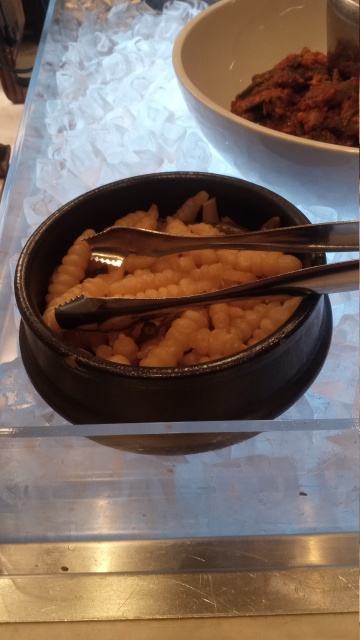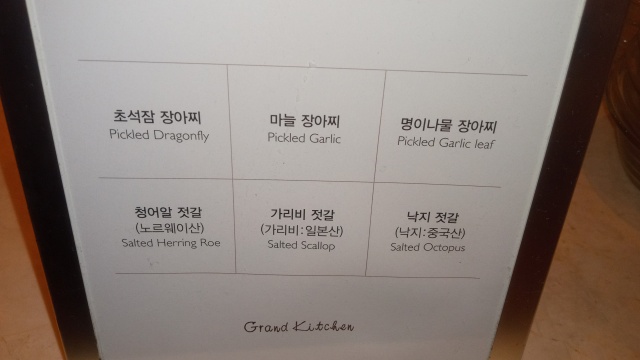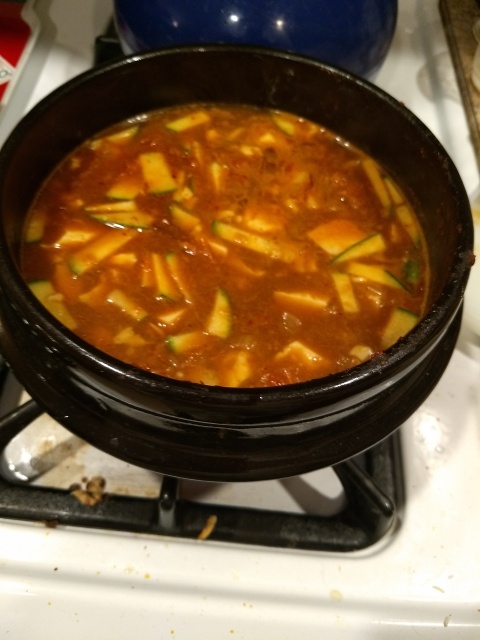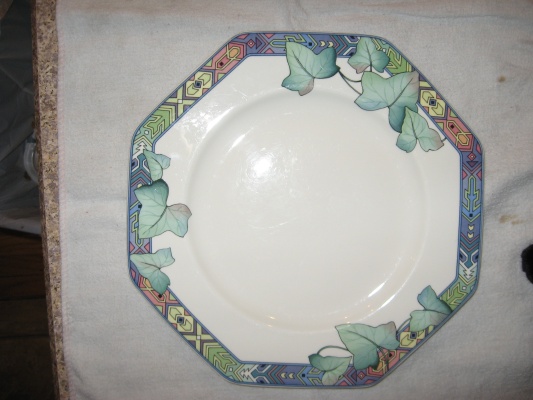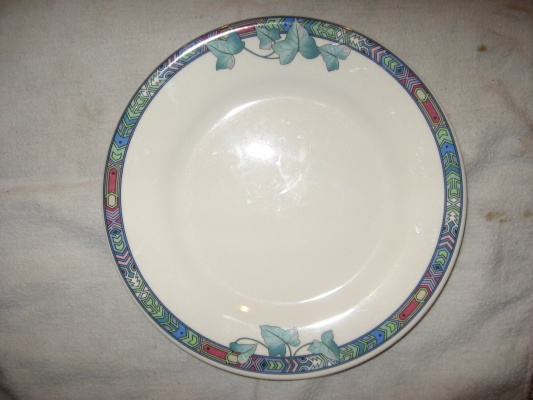Mark Dominus (陶敏修)
mjd@pobox.com

Archive:
| 2025: | JFMAMJ |
| JAS | |
| 2024: | JFMAMJ |
| JASOND | |
| 2023: | JFMAMJ |
| JASOND | |
| 2022: | JFMAMJ |
| JASOND | |
| 2021: | JFMAMJ |
| JASOND | |
| 2020: | JFMAMJ |
| JASOND | |
| 2019: | JFMAMJ |
| JASOND | |
| 2018: | JFMAMJ |
| JASOND | |
| 2017: | JFMAMJ |
| JASOND | |
| 2016: | JFMAMJ |
| JASOND | |
| 2015: | JFMAMJ |
| JASOND | |
| 2014: | JFMAMJ |
| JASOND | |
| 2013: | JFMAMJ |
| JASOND | |
| 2012: | JFMAMJ |
| JASOND | |
| 2011: | JFMAMJ |
| JASOND | |
| 2010: | JFMAMJ |
| JASOND | |
| 2009: | JFMAMJ |
| JASOND | |
| 2008: | JFMAMJ |
| JASOND | |
| 2007: | JFMAMJ |
| JASOND | |
| 2006: | JFMAMJ |
| JASOND | |
| 2005: | OND |
In this section:
Subtopics:
| Mathematics | 245 |
| Programming | 99 |
| Language | 95 |
| Miscellaneous | 75 |
| Book | 50 |
| Tech | 49 |
| Etymology | 35 |
| Haskell | 33 |
| Oops | 30 |
| Unix | 27 |
| Cosmic Call | 25 |
| Math SE | 25 |
| Law | 22 |
| Physics | 21 |
| Perl | 17 |
| Biology | 16 |
| Brain | 15 |
| Calendar | 15 |
| Food | 15 |
Comments disabled
Tue, 04 Feb 2025
Content warning: mass killing of farmed animals
Today I complained that my email provider had delivered a spam message to me that was in Polish. I understand that spam can be hard to identify, but Polish isn't, I don't know Polish, and any message sent to me in Polish can be discarded. Even if it's 100% legit, I don't know Polish, so we might as well throw it out.
This led a colleague to remark:
I'd love to try Polish spam. I wonder if there'd be caraway seed.
I wonder too.
But first I have to tell this story I heard from a Romanian co-worker. He said that in Romania in the 1980s they had a lot of mink farms, for mink fur. When they were done getting the fur they would have a big pile of dead, naked minks, so what would they do with them? Well, in Romania in the 1980s, meat was scarce, so they would eat them. The trouble is, minks are carnivores, they are tough and stringy and taste terrible. To make them edible, the Romanians chopped them finely, made them into small loaves, and canned them like Spam. Still this "Spink" was only barely edible, it was the variety of meat that was only eaten by Romanians who could afford no other meat.
I told my colleague this, and said “That's the best I can do for you regarding local versions of Spam in formerly Soviet-bloc countries.” Is not Spam and it is not Polish, but at least it is interesting. Maybe.
Thanks to the Wonders of the Internet, it is not hard to find Spamlike potted meat products from Poland. For example, konserwa lisiecka, which is actually a canned sausage:
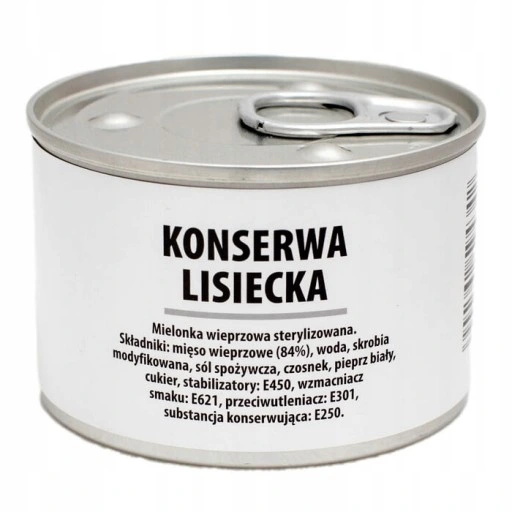
The label has the ingredients listed clearly. I see garlic (czosnek), white pepper (pieprz biały), and sugar (cukier) but no caraway, which I think would be kminek.
Here's golonka wieprzowa:
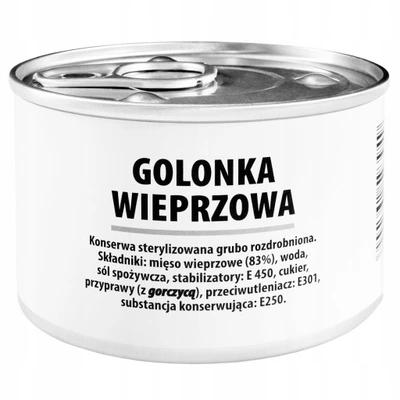
This time the ingredients include przyprawy, which is “spices” and could conceivably include caraway, but the label specifies z gorczycą, which means “including mustard”, so if there is caraway it does not get top billing.
From the labels I guess these are something like military-issue rations, which I suppose would be seasoned to the least common denominator. Perhaps someone's grandma makes a delectable potted pork dish with lots of caraway.
I do not speak Polish. If I have made any language errors, I apologize to Maciej Cegłowski.
[Other articles in category /food] permanent link
Tue, 23 Apr 2024I've just learned that Oddbins, a British chain of discount wine and liquor stores, went out of business last year. I was in an Oddbins exactly once, but I feel warmly toward them and I was sorry to hear of their passing.
In February of 2001 I went into the Oddbins on Canary Wharf and asked for bourbon. I wasn't sure whether they would even sell it. But they did, and the counter guy recommended I buy Woodford Reserve. I had not heard of Woodford before but I took his advice, and it immediately became my favorite bourbon. It still is.
I don't know why I was trying to buy bourbon in London. Possibly it was pure jingoism. If so, the Oddbins guy showed me up.
Thank you, Oddbins guy.
[Other articles in category /food] permanent link
Thu, 09 Feb 2023
I fail to eat pickled dragonflies
Last month we went to Korea to visit Toph and Katara's maternal grandparents. We stayed in a hotel with a fancy buffet breakfast. After the first breakfast Katara asked if I had seen the pickled dragonflies. I had not — there was too much to see! But I looked for them the next day.
They looked like this:
The label did indeed identify his (in English) as “Pickled Dragonfly”:
(It wasn't too unlikely, because Koreans do sometimes eat insects. You used to be able to buy toasted silkworm pupae on the street as a snack, although I didn't see any on this trip. And I have seen centipedes on sale for medicinal purposes, I think perhaps candy-coated.)
I tried one, but after one bite I described it as “vegetal”. The more I thought about it (and the more of them I ate) the more sure I was that it was a mislabeled vegetable of some sort. I would expect an insect to have a hard shell and a softer inside. This, whatever it was, was crunchy but completely uniform, with a texture quite like a jicama or raw potato.
Fortunately there was a Korean label on it that was more accurate than the English label: “초석잠 장아찌” (/choseokjam jangajji/).
장아찌 means pickled vegetables but it took quite a while to track down what vegetable it was because it is not much eaten in the West.
초석잠 (/choseokjam/) is the correct Korean name. It is the tuber of Stachys affinis, sometimes called Chinese artichoke or artichoke betony. I had not heard of betony before but there is apparently a whole family of edible betony plants.
I liked them and ate them with breakfast most days. Here's what they look like before they have been pickled:
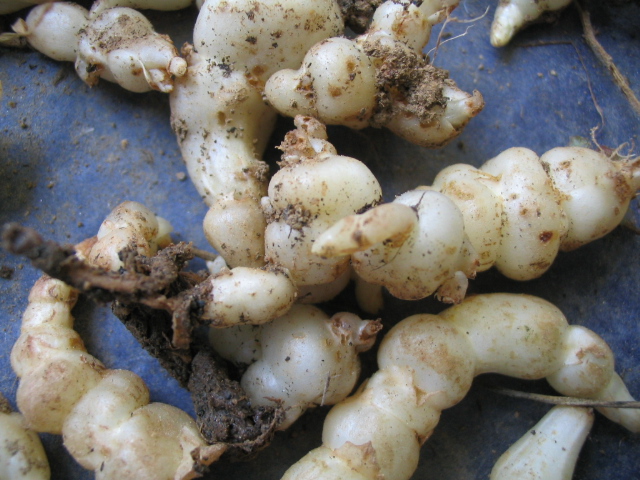
Stachys affinis photograph CC BY-SA 3.0, via Wikimedia Commons.
[Other articles in category /food] permanent link
Sat, 06 Mar 2021Last week I thought “there must be a restaurant in California somewhere called ‘Pasta la Vista, Baby’”, so I asked the Goog. The Goog says it does not know of one!
It says there is a ‘Pasta La Vista’ in Winnipeg, which I was not expecting, and also one called ‘Pasta A La Vista‘ which has an acceptable excuse, since it is in Bella Vista, AR.
There are quite a few Pasta La Vistas in Europe. And there is one called ‘Pasta la Vista Baby’. It is near the University in Örebro, sixth-largest city in Sweden. This isn't the last place I would have expected to find ‘Pasta la Vista Baby’, but I don't think it's in the top thousand either.
[Other articles in category /food] permanent link
Mon, 24 Aug 2020Ripta Pasay brought to my attention the English cookbook Liber Cure Cocorum, published sometime between 1420 and 1440. The recipes are conveyed as poems:
Conyngus in gravé.
Sethe welle þy conyngus in water clere,
After, in water colde þou wasshe hom sere,
Take mylke of almondes, lay hit anone
With myed bred or amydone;
Fors hit with cloves or gode gyngere;
Boyle hit over þo fyre,
Hew þo conyngus, do hom þer to,
Seson hit with wyn or sugur þo.
(Original plus translation by Cindy Renfrow)
“Conyngus” is a rabbit; English has the cognate “coney”.
If you have read my article on how to read Middle English you won't have much trouble with this. There are a few obsolete words: sere means “separately”; myed bread is bread crumbs, and amydone is starch.
I translate it (very freely) as follows:
Rabbit in gravy.
Boil well your rabbits in clear water,
then wash them separately in cold water.
Take almond milk, put it on them
with grated bread or starch;
stuff them with cloves or good ginger;
boil them over the fire,
cut them up,
and season with wine or sugar.
Thanks, Ripta!
[Other articles in category /food] permanent link
Thu, 14 Nov 2019Katara and I are in a virtuous cycle where she thinks of some food she wants to eat and then asks me to cook it, I scratch my head and say "Well, I never did, but I could try", and then I do, and she tells me it was really good. This time she suggested I should make soondubu jjigae (순두부찌개), which is a Korean stew that features very soft tofu. (“Dubu” (두부) is tofu, and “soon dubu” is soft tofu.)
I did it and it came out good, everyone was happy and told me how great I am. Cooking for my family makes me feel like a good dad and husband. Hey, look, I am doing my job! I love when I do my job.
I thought maybe soondubu would be one of those things where you can make it at home with endless toil but in the end you have a product that is almost as good as the $6.95 version you could get from the place downstairs. But it was actually pretty easy. Korean cuisine is often very straightforward and this was one of those times. I approximately followed this recipe but with several changes. (One of these days I'll write a blog article about how so many people stress out about the details of recipes.) The overall method is:
Dice up some onion and garlic finely and put them in the pot with sesame oil and kochujang. Then you add the meat if you are doing that, and then about a half a cup of chopped up kimchi. Then you put in broth and you add the soondubu. Easy-peasy.
The recipe on that page called for beef but I used chicken meat in cubes because that was what Katara asked for. All the soondubu recipes I found call for kochugaru (red pepper flakes) instead of kochujang (red pepper soybean paste) but I didn't have any handy and so what?
Somewhere in the world there is some food snob who will sneer and say that Real Soondubu is always made with kochugaru, and using kochujang is totally inauthentic. But somewhere else there is someone who will say “well, my grandmother always liked to use kojujang instead”, and Grandma outranks the food snob. Also I decided this year that the whole idea of “authentic” recipes is bullshit and I am going to forget about it.
I used chicken broth out of a box. The recipe called for scallions but I think I didn't have any handy that time. The recipe called for anchovy paste but I left them out because Lorrie doesn't like the way they taste. But I put did in some thin slices of zucchini. We do have a nice Korean-style glazed earthenware pot which I cooked in and then transported directly to the table.
Everyone in my family likes soondubu and it made me really happy that they considered my first one successful.
[Other articles in category /food] permanent link
Wed, 25 Jul 2018In my email today I found a note I sent to myself on 24 June 2015 that says only:
Self-warming sake bottle
which would be useful, if you don't drink your sake so quickly that it is gone before it has cooled.
As far as I know, these are not common and perhaps do not exist at all. Why not? Is this a billion-dollar idea?
A few problems come to mind. If the bottle has a cord, it will be hard to pour and will be easily upset. Maybe the best choice here would be a special power supply with relatively high voltage and a thin cord such as is used for earbuds. But this might be dangerous, or impractical for other reasons I am not thinking of.
I think battery power is also probably impractical. Heating requires a lot of energy and batteries don't supply enough. They would need to be frequently replaced, which gets expensive.
Also temperature control might be troublesome. You would need some sort of thermostat in the bottle. Typical inexpensive heating containers and immersion heaters are for bringing water to a boil, which is much simpler than warming sake to the right temperature: just dump in as much heat as possible, as quickly as possible, and perhaps also arrange to have the heat shut off if the heating element gets up to 100°C. This is much too hot for sake.
I think a more practical solution would be a tabletop hot water bath with a bottle-shaped depression in it. The hot water bath could have the thermostat and be permanently attached to a wall outlet. You insert the bottle in its bath to keep it warm when you are not pouring.
This seems practical enough that I imagine it already exists. In fact it occurs to me that I owned a similar sort of warmer at one point, for warming baby bottles. But a quick perusal of available sake warmers suggests that this approach is not common. What gives?
[Other articles in category /food] permanent link
Mon, 16 Jul 2018[ I wrote this in 2007 and it seems I forgot to publish it. Enjoy! ]
I eat pretty much everything. Except ketchup. I can't stand ketchup. When I went to Taiwan a couple of years ago my hosts asked if there were any foods I didn't eat. I said no, except for ketchup.
"Ketchup? You mean that red stuff?"
Right. Yes, it's strange.
When I was thirteen my grandparents took me to Greece, and for some reason I ate hardly anything but souvlaki the whole time. When I got home, I felt like a complete ass. I swore that I would never squander another such opportunity, and that if I ever went abroad again I would eat absolutely everything that was put before me.
This is a good policy not just because it exposes me to a lot of delicious and interesting food, and not just because it prevents me from feeling like a complete ass, but also because I don't have to worry that perhaps my hosts will be insulted or disappointed that I won't eat the food they get for me.
On my second trip to Taiwan, I ate at a hot pot buffet restaurant. They give you a pot of soup, and then you go to the buffet and load up with raw meat and vegetables and things, and cook them at your table in the soup. It's fun. In my soup there were some dark reddish-brown cubes that had approximately the same texture as soft tofu. I didn't know what it was, but I ate it and tried to figure it out.
The next day I took the bus to Lishan (梨山), and through good fortune was invited to eat dinner with a Taiwanese professor of criminology and his family. The soup had those red chunks in it again, and I said "I had these for lunch yesterday! What are they?" I then sucked one down quickly, because sometimes people interpret that kind of question as a criticism, and I didn't want to offend the professor.
Actually it's much easier to ask about food in China than it is in, say, Korea. Koreans are defensive about their cuisine. They get jumpy if you ask what something is, and are likely to answer "It's good. Just eat it!". They are afraid that the next words out of your mouth will be something about how bad it smells. This is because the Japanese, champion sneerers, made about one billion insulting remarks about smelly Korean food while they were occupying the country between 1911 and 1945. So if you are in Korea and you don't like the food, the Koreans will take it very personally.
Chinese people, on the other hand, know that they have the best food in the world, and that everyone loves Chinese food. If you don't like it, they will not get offended. They will just conclude that you are a barbarian or an idiot, and eat it themselves.
Anyway, it turns out that the reddish-brown stuff was congealed duck's blood. Okay. Hey, I had congealed duck blood soup twice in two days! No way am I going home from this trip feeling like an ass.
So the eat-absolutely-everything policy has worked out well for me, and although I haven't liked everything, at least I don't feel like I wasted my time.
The only time I've regretted the policy was on my first trip to Taiwan. I was taken out to dinner and one of the dishes turned out to be pieces of steamed squid. That's not my favorite food, but I can live with it. But the steamed squid was buried under a big, quivering mound of sugared mayonnaise.
I remembered my policy, and took a bite. I'm sure I turned green.
So that's the food that I couldn't eat.
[ Some of this 2007 article duplicates stuff I have said since; for example I cut out the chicken knuckles story, which would have been a repeat. Also previously; also previously; and another one ]
[Other articles in category /food] permanent link
Thu, 19 Apr 2018
Soldier fly protein: why so expensive?

There have been recurring news stories about the use of dried maggots as protein supplement in animal feed. For example Insects could feed the animals of tomorrow’s meat industry (maggots fed on slaughterhouse waste, particularly blood) or Insect farms gear up to feed soaring global protein demand (maggots fed on rotten fruit). Then they dry the larvae and either use them whole or grind them into meal. In particular the fly meal can be used as a replacement for fish meal, which is ground dried fish that is used as feed for fish in fish farms. (Yep, we grind up fish we don't like, to feed to other, better fish.)
I was referred to that second article by Metafilter and The Google, in its infinite wisdom, decided to show me an advertisement for dried fly larvae. The ad was for NaturesPeck, which sells bagged fly larvae and fly meal for use as poultry feed or wild bird feed. They have a special “value pack” that contains 16 pounds of dried larvae for $88. That is $5.50 a pound! Holy cow, WTF? How can that even be possible when my local grocery store is selling boneless center cut pork chops for $2.50 per pound?
Okay, I thought maybe NaturesPeck was some sort of boutique operation, charging a high markup for small quantities, maybe they claim to have sustainably-harvested fly meal from free-range organically-fed flies or something. So I went looking for an industrial wholesaler of bulk fly meal and quickly found Haocheng Mealworms Inc. in Xiangtan, China. This is definitely what I was looking for; they will be glad to sell you a standard 40-foot shipping container full of dried maggots or other larvae. The quoted price for dried mealworm larvae is $8400 per metric tonne, plus shipping ($170–200 per tonne).
Prices, converted to U.S. dollars per pound, are as follows:
| Dried soldier fly maggots | $2.49 |
| Powdered soldier fly maggots | 2.81 |
| Dried mealworms | 3.81 |
| Powdered mealworms | 4.22 |
| Live mealworms | 5.67 |
| Canned fresh mealworms | 7.08 |
| Dried superworms | 4.76 |
| Live superworms | 8.30 |
| Canned fresh superworms | 7.71 |
So it wasn't just that NaturesPeck was marking them up. Even the least expensive product costs as much as retail pork chops.
I don't get it. There must be some important aspect of this that I am missing, because a market failure of this magnitude is impossible.
BTW, Haocheng recommends that:
As a source of high protein additive, put [mealworms] into the bread, flour, instant noodle, pastry, biscuit, candy, condiment, and direct into the dishes on the dining table like the foodstuff, and process into the health care nourishment to improve the human body immunity ability.
Not at those prices, buddy.
[ Addendum 20180502: Some possible explanations ]
[Other articles in category /food] permanent link
Tue, 30 Jan 2018Sapporo restaurant, on West 49th Street in New York, closed yesterday. There are 24,000 restaurants in New York, and for many, many years, Sapporo was my favorite.
Sapporo was a ramen restaurant, probably the first in New York. I remember first hearing the word “ramen” in the early 1980s, when the Larmen Dosanko appeared near Lincoln Center. But Sapporo opened in 1975. I started going there around 1984. I didn't discover it on my own; I think my dad and I happened in one day when we were in the neighborhood. But it made a big impression on me, and I would regularly stop in whenever I was nearby, and sometimes I would walk downtown (about 45 minutes) just to eat there.
When I was fifteen years old, I did something fifteen-year-old boys often do: I grew six inches and added thirty pounds in one year. I ate all the time. I spent so much time eating that it wasn't enjoyable any more, and I complained that I was tired of it and didn't have enough time to do anything else. I would come home from school and eat a double-decker sandwich (sliced muenster with mayonnaise was my favorite), half a pound of feta cheese, three yogurts, and whatever leftovers I could find in the fridge, and then two hours later when my parents got home I would ask “What's for dinner? I'm starving.” I fell in love with Sapporo because it was the only restaurant where I could afford to order as much food as I could eat. I would come out of Sapporo full. Sometimes when I left Sapporo there was still some rice or noodles in my bowl, and I would stop thinking about food for an hour or two.
On the table were three intriguing bottles, one brown, one pale yellow, and one bright red. The brown one was obviously soy sauce, but what were the others? I learned that the pale yellow one was vinegar and the bright red one was hot oil and had great fun trying them out in different combinations. I had never thought of using vinegar as a condiment, and I loved it.
Sapporo was where I first had agedashi dofu, which is delectable cubes of soft tofu, dusted in flour or starch, fried brown and crisp, and served in savory broth. It is ephemeral: you have to eat it right away, before it gets cold and soggy.
My favorite dish was the pork cutlet donburi. (They didn't call it “katsudon”; I didn't learn that until later.) The cutlet was embedded, with onions, in a fried egg that covered and adhered to the top of the rice, and I can still remember how it tasted with the soy sauce and vinegar, and the texture of it. It was tricky to pick up the cutlet, with its attached fried egg, with chopsticks. I now use chopsticks as well as I use a fork, automatically and unconsciously, and I think Sapporo was probably where I learned to do it.
Because of Sapporo, I became so enamored of vinegar that I started to put it on everything. I didn't like mustard, I thought, but one day I learned that the principal ingredient in mustard, other than the mustard itself, was vinegar. This put a new light on things and I immediately decided I had better give mustard another try. I discovered that I did indeed like mustard (like vinegar, but with extra flavor!) and I have liked it ever since.
(Around the same time of my life, I was learning about beer, and I eagerly tried Sapporo beer, which they feature, hoping that it would be as wonderful as Sapporo restaurant. I was disappointed.)
I deeply regret that I missed my last chance to eat there. I was staying in Midtown with Toph last summer and suggested that we eat dinner there, but she chose to go somewhere else. It didn't occur to me that Sapporo might not always be there, or I would have insisted.
Goodbye, Sapporo. I love you and I will miss you.
[Other articles in category /food] permanent link
Fri, 04 Jan 2008
Katara is not a vegetarian
I just had a long vacation and got to spend a lot of time with Katara,
which is why she's popping up so much all of a sudden. I seem to have
gotten into Mimi Smartypants mode. I will return to the
regularly-scheduled discussions of programming and mathematics
shortly. But since I seem to have written two articles in a row
([1] [2])
on the subject of telling kids the difficult truth, I thought I'd try to
finish up this one, which has been mostly done for months now. Also
there was a recent episode that got me thinking about it again.
I went to visit Katara at school last week, and stayed for lunch. I was seated with Katara and three other little girls. As the food was served, one of the girls, Riley, made some joke about how the food cart contained guinea pigs instead. This sort of joke is very funny to preschoolers.
My sense of humor is very close to a preschooler's, and I would have thought that this was funny if she had said that the food cart contained clocks, or nose hairs, or a speech in defense of the Corn Laws, or the Trans-Siberian Railroad, or fish-shaped solid waste. But she said guinea pigs, and instead of laughing, I mused aloud that I had never eaten a guinea pig.
Riley informed me that "You can't eat guinea pigs! They're animals, not food."
"Sure you can," I said. "Meat is made from animals."
Riley got this big grin on her face, the one that preschoolers get when they know that the adults are teasing them, and said "Nawww!"
"Yes," I said. "Meat comes from animals."
Riley shook her head. She knew I was joking. A general discussion ensued, with Katara taking my side, and another girl, Flora, taking Riley's. In the end, I did not convince them.
"Well," I said, mostly to myself, at the end, "you girls are in for a rude awakening someday."
Now, I know that not everyone is as direct as I am. And I know that not all non-vegetarians are as concerned as I am about the ethics of eating meat. But wow. I would have thought that someone would have explained to these girls where meat came from, just as a point of interest if nothing else. Or maybe they would have made the connection between chicken-the-food and chicken-the-farm-animal. I mean, they are constantly getting all these stories set on farms. Since three-year-olds ask about a billion questions a day. they must ask around a thousand questions a day about the farms, so how is it that the subject never came up?
Katara was accidentally exposed to a movie version of Charlotte's Web on an airplane, and the plot of Charlotte's Web is that Charlotte is trying to save Wilbur from being turned into smoked ham. Left to myself I wouldn't have exposed Katara to Charlotte's Web so soon—it is too long for her, for one thing—but my point here is that the world is full of reminders of the true nature of meat, and they can be hard to avoid. So I was very surprised when it turned out that these two age-mates of Katara's were so completely unaware of it.
Anyway, Katara has known from a very early age where meat comes from. Early in her meat-eating career, probably before she was two years old, I specifically explained it to her. I wanted to make sure that she understood that meat comes from animals. Because there are serious ethical issues involved when one eats animals, and I think they must be considered. We may choose to kill and destroy thinking beings to make food, but we should at least be aware that that is what is happening. I'm not sure I think it is evil, but I want to at least be aware of the possibility.
I have never been a vegetarian, but I want to try to face the ethical results of that choice head on, and not pretend that they are not there. I did not want Katara growing up to identify meat with sterile packages in the supermarket. Meat was once alive, moving around with its own agenda, and I think it is important to understand this.
So I made an effort to bring up the subject at home, and then one day when Katara was around twenty months old we went to a Chinese restaurant that has live fish in tanks at the front of the restaurant, and you can ask them to take one of these fish into the kitchen to be cooked for your dinner. Katara has loved to eat fish since she was a tiny baby.
We ordered a striped bass, and then I took Katara to look at the fish in the tanks. I explained to her that these fish swimming in the tanks were for people to eat, and that when we ordered our fish for dinner, a waiter came out and caught one of the fish in a net, took it back to the kitchen, and they killed it and were cooking it for us.
As I said, I had made the point before, but never so directly. We had never before seen the live animals that were turned into food for us. I really did not know how Katara would respond to this. Some people have a very strong negative response when they first learn that meat comes from animals, so negative that they never eat meat again. But I thought Katara should know the truth and make her own decision about how to respond.
Katara's response was to point at one of the striped bass and say "I want to eat that one."
Then she took me to each tank in turn, and told me me which kind of fish she wanted to eat and which ones she did not want to eat. (She favored the fish-looking fish, and rejected the crabs, shrimp, and eels.)
Then when the fish arrived on our table Katara asked if it had been swimming in the tank, and I said it had. "Yum yum," said Katara, and dug in.
Addendum 20250621
I wrote a followup to this, never published, in which I mentioned that the working title for the article was “Katara is not _yet_ a vegetarian”:But the matter is not yet settled. Katara has many opportunities before her to change her mind, perhaps several times. I changed the article title several times before releasing it. The alternate title was "Katara is not yet a vegetarian". The story is not over. And I think Katara should get lots of practice thinking about everything as early as possible, so that she stays in the habit of doing that as she gets older.I am proud to announce that Katara is, 17 years later, not merely a vegetarian but a vegan.
[Other articles in category /food] permanent link
Mon, 17 Dec 2007
Strangest Asian knockoff yet
A few years ago Lorrie and I had brunch at the very trendy
Philadelphia restaurant "Striped Bass". I guess it wasn't too
impressive, because usually if the food is really good I will remember
what I ate, even years later, and I do not. But the plates
were awesome. They were round, with an octagonal depression in the
center, a rainbow-colored pattern around the edge, garnished with
pictures of ivy leaves.
Good plates have the name of the maker on the back. These were made by Villeroy & Boch. Some time later, we visited the Villeroy & Boch outlet in Woodbury, New York, and I found the pattern I wanted, "Pasadena". The cool circular plates from Striped Bass were only for sale to restaurants, but the standard ones were octagonal, which is also pretty cool. So I bought a set. (57% off list price! Whee!)
(The picture gets much bigger when you click it.)
They no longer make these plates. If you broke one, and wanted a replacement, you could buy one online for $43.99. Ouch! But there is another option, if you are not too fussy.
Many years after I bought my dishes, I was shopping in one of the big Asian grocery stores on Washington Avenue. They have a kitchenware aisle. I found this plate:
The real VB plate is made of porcelain. The Washington Avenue knockoff is made of plastic.
Of course I bought it. It is hilarious! And it only cost two dollars.
[ Addendum 20170131: A challenger appears! ]
[Other articles in category /food] permanent link
Thu, 12 Jul 2007
New York tourism
Anil Dash recently blogged about touristy
stuff in New York that you should skip. I grew up in New York, so
I know something about this.
Top of Anil's list: the Statue of Liberty. He advises taking the Staten Island Ferry instead. I couldn't agree more. The Statue is great, but it's just as great seen from a distance, and you get a superb view of it from the Ferry. The Ferry is cheap (Anil says it's free; it was fifty cents last time I took it) and the view of lower Manhattan is unbeatable.
Similarly, you should avoid the Circle Line, which is a boat trip all the way around Manhattan Island. That sounds good, but it takes all day and you spend a lot of it cruising the not-so-scenic Harlem River. The high point of the trip is the view of lower Manhattan and the harbor. You can get the best parts of the Circle Line trip by taking the Staten Island Ferry, which is much cheaper and omits the dull bits.
Ten years ago I would have said to skip the World Trade Center in favor of the Empire State Building. Well, so much for that suggestion.
Anil says to skip Katz's and the Carnegie Deli, that they're tourist traps. I've never been to Katz's. I would not have advised skipping the Carnegie. I have not been there since 1995, so my view may be out of date, and the place may have changed. But in 1995 I would have said that although it is indeed a tourist trap, the pastrami sandwich is superb nevertheless. At no time, however, would I have advised anyone to eat anything else from there. Get the sandwich and eat it in the comfort of your hotel room, perhaps. But quickly, before it gets cold.
Also in the "go there but only eat one thing" department is Junior's Restaurant, at (I think) Atlantic and De Kalb avenues in Brooklyn. Now here's the thing about Junior's: their cheesecake is justly famous. They guarantee it. It is not your usual guarantee. A typical guarantee would be that if you are not happy with the cheesecake, they will refund your money. That is not Junior's guarantee. No. Junior's guarantees your money back unless their cheesecake is the best you have ever eaten.
Lorrie and I once ordered a cheesecake from Junior's. They ship it overnight, packed in dry ice. Our order was delayed in transit; we called the next day to ask where it was. They apologized and immediately overnighted us a second cheesecake, free, with no further discussion. The next day the two cheesecakes arrived in the mail. Both of them were the best cheesecake I have ever eaten.
But I once went to have dinner at Junior's. This was a mistake. Their cheesecake is so stupendous, I thought, how could their other food possibly fail? As usual, the cheesecake was the best I have ever eaten. But dinner? Not so hot. Do go to Junior's. You don't even have to schlep out to Atlantic Avenue, since they have opened restaurants in Times Square and at Grand Central Station. Get the cheesecake. But eat dinner somewhere else.
Anil says not to eat in the goddamn Olive Garden, and of course he is right. What on earth is the point of going to New York, food capital of this half of the Earth, and eating in the goddamn Olive Garden? You could have done that in Dubuque or Tallahassee or whatever crappy Olive-Garden-loving burg you came from.
If you don't know where to eat in New York, here's my advice: Take the subway to 42nd street, get out, and walk to 9th Avenue. Choose a side of the street by coin flip. Walk north on 9th avenue. Make a note of every interesting-seeming restaurant you pass. After three blocks, you will have passed at least ten interesting-seeming restaurants. Walk back to the most interesting-seeming one and go in, or select one at random. I promise you will have a win, probably a big win. That stretch of 9th Avenue is a paradise of inexpensive but superb restaurants.
I have played the 9th Avenue game many times and it has never failed.
Speaking of "things to skip", I suggest skipping the giant Times Square New Year's Eve celebration, unless you are a pickpocket, in which case you should get there early. Instead, have dinner on 9th Avenue. As you pass each cross-street walking down 9th Avenue, you will be able to see the Times Square crowd two blocks east, and you can pause a moment to think how clever you are to not to be part of it; feeling smugly superior to the writhing mass of humanity is an authentically New York experience. Then have an awesome dinner on 9th Avenue, and take the subway home.
Anil's whole series is pretty good, and as a native New Yorker I found little to disagree with. But I think he may be a little misleading when he says "the natives are friendly and helpful." I would say not. Neither are they unfriendly or unhelpful. What they mostly are, in my experience, is brusque and in a hurry. They will not go out of their way to abuse, harass, or ridicule you; nor will they go out of their way to advise or assist you. The New Yorkers' outlook on the world is that they have important business to attend to, and so, presumably, do you, and everything will run smoothly as long as everyone just stays out of each others' way and attends to their own important business.
In Boston, people will take you personally. I was once thrown out of a liquor store in Boston for daring to ask for a bottle of rye in a manner that the proprietor found offensive. This would never happen in New York. New Yorkers don't have time to be offended by your stupid demands, and they will not throw you out, because they want your money, and if dealing with your stupid demands is what they have to do to get it, well, they will just deal with your stupid demands as quickly as possible. A New York liquor store owner is not in the business of getting offended, and he has more important things to do than to throw you out. He is in the business of taking your money, and if he throws you out, it is because you are getting in the way of his next customer and preventing him from taking his money. Most likely, if you ask for rye, the New York liquor store owner will take your money and give you the rye.
There is a story about Hitler and Goebbels having an argument, with Hitler arguing that the Jews were too inferior to pose any sort of threat, and Goebbels disputing with him, saying that Jews are devious and cunning. To prove his point, Goebbels takes Hitler to a Jewish-run hardware and sundries store and asks the proprietor for a left-handed teapot. The proprietor hesitates a moment, says "let me check in the back room," and returns carrying a teapot in his left hand. "Yes," he says, "I had just one left." As Goebbels and Hitler leave the shop with their left-handed teapot, Goebbels says "I told you the Jews were cunning." Hitler replies "What's so cunning about having one left?"
A Bostonian would have told those two assholes where they could stick their left-handed teapot. That Jew emigrated from Germany, and he did not go to Boston. He went to New York, as did his fifty devious cousins.
But I digress.
In some cities I have visited, there is no convention about which side of the subway stairs are for going up and which are for going down. People just go up whichever side they feel like. In New York, you always travel on the right-hand side of the stairs. Everyone does this, because everyone knows that if they don't they will just get in the way and hold everyone up, including themselves. They have no time for this disorganized nonsense in which people go up whatever side of the stairs suits them.
New Yorkers do not stop and stand in doorways. When New Yorkers need to open their umbrellas, they step aside, and do it out of the way.
New Yorkers are orderly queuers. Disorganized queuing just wastes everyone's time. You don't want to waste everyone's time, do you? So get in line and shut the hell up!
Here in Philadelphia, we waste a lot of time trying to flag down cabs that turn out to be full. New Yorkers would never tolerate such slack management. In New York, taxicabs have a lamp on top that is wired to the taximeter; it lights up when the taxi is empty. That is good business for drivers, for riders, for everyone. I like Philadelphia well enough to have lived here for seventeen years, but it's no New York, let me tell you.
Hong Kong, on the other hand, is a very satisfactory New York. A few years back I visited Hong Kong, food capital of the other half of the Earth, on business, and loved it there. Not least because of the food. The Cantonese are the best cooks in the world, cooks so gifted and brilliant that people all over the world line up on the weekends to eat Cantonese-style garbage, and then come back next weekend to eat it again, because Cantonese garbage, which they call dim sum, but if you think about it for a minute you will realize that dim sum is the week's leftovers, served up in a not-too-subtle disguise, dim sum is more delicious than other cuisines' delicacies. And Hong Kong has the best Cantonese food in the world.
People had warned me beforehand that the Hongkongians were known for being brusque and rude. And that is what I found. Several times in Hong Kong I called up someone or other to try to get something done, and the conversation went roughly like this: I would start my detailed explanation of what I wanted, and why, and the person on the other end of the phone would cut me off mid-sentence, saying something like "You need x; I do y. OK? OK! <click>" and that was the end of it.
As a New Yorker, I recognized immediately what was going on. Brusque, yes, but not rude. I knew that the person on the other end of the phone was thinking that their time was valuable, that I presumably considered my own time valuable, and that we would both be best served if each of us wasted as little of our valuable time as possible in idle chitchat. New Yorkers are just like that too. I gather some people are offended by this behavior, and want the person on the phone to be polite and friendly. I just want them to shut up and do the thing I want done, and in Hong Kong that is what I got.
So if you are a tourist in New York, please try to remember: New Yorkers may appear to be trying to get rid of you as quickly as they can, and if it seems that way, it is probably because they are trying to get rid of you as quickly as they can. But they are doing it because they are trying to help, because they have your best interests at heart. And also because they want to get rid of you as quickly as they can.
[Other articles in category /food] permanent link
Wed, 07 Feb 2007
Fondue
Lorrie and I had fondue for dinner two nights ago. To make cheese
fondue, you melt a lot of Swiss cheese into a cup of dry white wine,
then serve hot and dunk chunks of bread into the melted cheese with
long forks.
Lorrie was in charge of buying the ingredients. I did not read the label on the wine before I opened and tasted it, and so was startled to discover that it was a Riesling, which is very much not a dry wine, as is traditional. Riesling is is a very sweet and fruity wine.
I asked Lorrie how she chose the wine, and she said she had gotten Riesling because she prefers sweet wines. I remarked that dry wines are traditional for fondue. But it was what we had, and I made the fondue with it. Anyway, as Lorrie pointed out, fondue is often flavored with a dash of kirsch, which is a cherry liqueur, and not at all dry. I never have kirsch in the house, and usually use port or sherry instead. Since we were using Riesling, I left that stuff out.
The fondue was really outstanding, easily the most delicious fondue I've ever made. Using Riesling totally changed the character of the dish. The Riesling gave it a very rich and complex flavor. I'm going to use Riesling in the future too. Give it a try.
Recipe
Rub the inside of a heavy saucepan with a cut garlic clove. Heat 1 cup Riesling over medium heat in the saucepan. When the surface of the wine is covered with fine bubbles, add 1 tablespoon corn starch and stir until dissolved. Reduce heat and slowly add 3/4 lb grated emmenthaler and 3/4 lb grated gruyere cheeses, stirring constantly until completely melted.Transfer to a caquelon (fondue pot) and serve with chunks of crusty French bread and crisp apples.
[Other articles in category /food] permanent link
Thu, 23 Nov 2006
Damning with faint praise
If you have used evaporated milk, you may have noticed that the label
says something like:
By adding one part water to one part of the contents of this can, a resulting milk product will be obtained which will not be below the legal standard for whole milk.
This sounds ghastly, doesn't it? "Will not be below the legal standard...". Shudder.
The purpose of this note is to let you know that:
- I have done this,
- more than once, and
- it not only wasn't as ghastly as it sounds,
- it wasn't ghastly at all.
From the warning on the label, you would expect maybe a 30% resemblance to milk; in truth, the resemblance is more like 85%. That's close enough to drink plain, if you're not too fussy, and it's certainly close enough to pour over your cereal without noticing the difference.
The wording of the label scares people off, but it works quite well, well enough that it is probably worth keeping a couple of cans in the closet for emergencies, like when you run out of milk for your cereal at 2 AM after the store is closed.
This has been a public service announcement of the Universe of Discourse. Happy Thanksgiving, everyone!
[Other articles in category /food] permanent link



